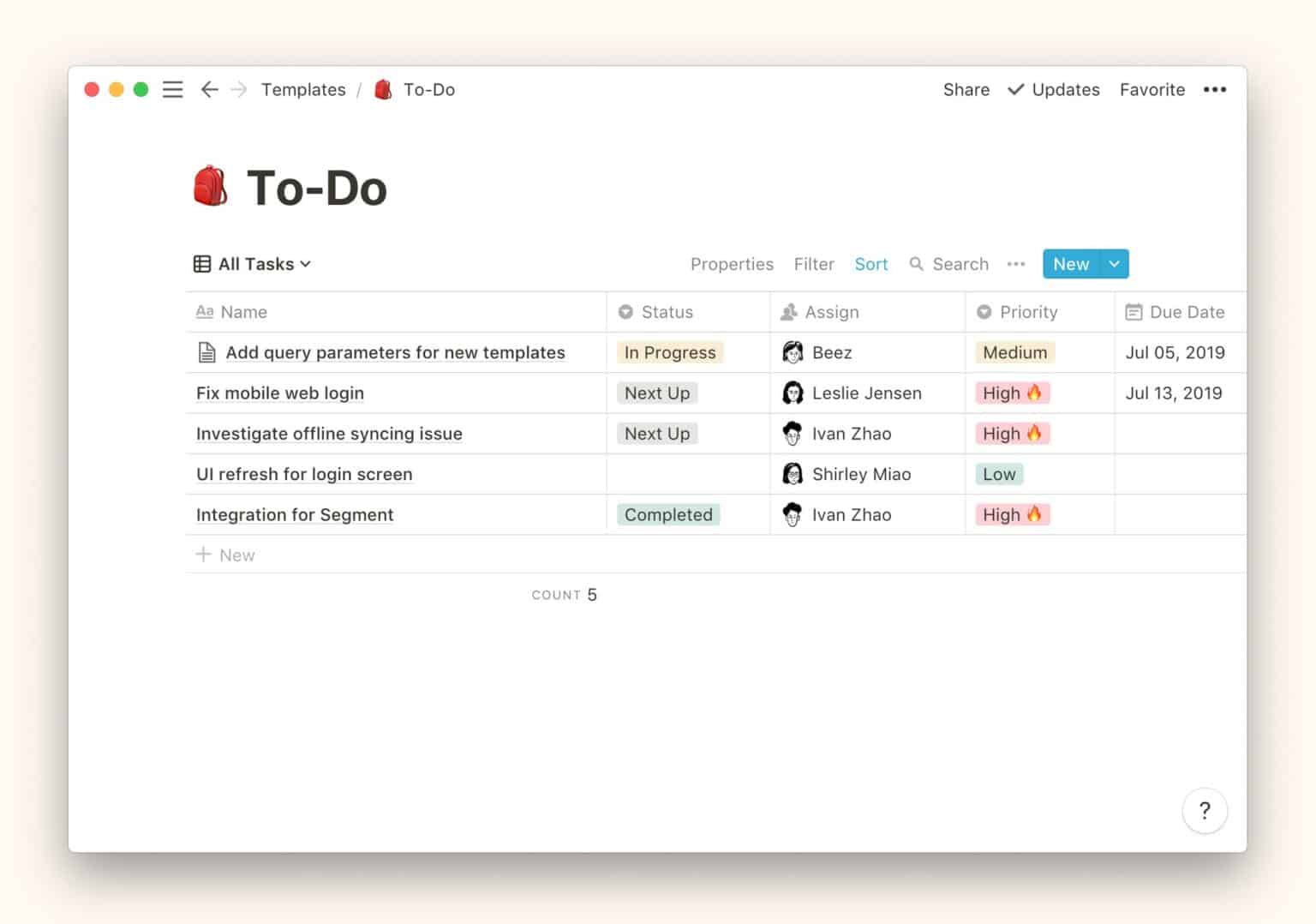

- #Notion tutorial for beginners how to
- #Notion tutorial for beginners movie
- #Notion tutorial for beginners code
However, I can open up any one of them and get a Notion page that works just like any other:
#Notion tutorial for beginners movie
In this example, each movie is a row in the database. The Table layout in Notion displays a database’s rows as they’re actually stored in the database (since Notion uses a table-style database structure with rows and columns). And in Notion, those rows are actually Notion pages themselves. Notion Databases at a Glanceĭatabases store rows (sometimes known as records). There are later sections in this guide for both (click to jump to them):įor now, it’s just useful to know the ways you can create new databases. If you create a database block using a layout command, Notion will give you the option to either create a Linked Database (which links to an existing source database), or to create a new database. You can also use the / command to create a database with the specific layout you want. In the video version of this lesson, we’ll be using everything we learn to create a useful example database – a simple task manager, which you could include in the personal dashboard that we’ve been building throughout the other lessons in this series. I encourage you to use the table of contents to jump around!

Note: This guide is massive, and is intended to be a truly complete tutorial for Notion databases. In this Notion Fundamentals lesson, I’ll guide you through all the basics of creating and using databases.
#Notion tutorial for beginners how to
Once you understand how to work with databases, you’ll unlock a whole new level of capability inside of Notion. Custom dashboards for sales and performance data.Within your Notion workspace, you can create databases that can store almost any kind of data, including text, numbers, file attachments, and more. Since he has two websites and a different team for each of those websites, he has multiple workspaces one for personal use and one for each website.* Unless you work on major, ongoing projects with separate teams and very distinct needs, I don’t recommend multiple workspaces.The most powerful and flexible tool in Notion is its database feature. Each workspace is also billed separately.Īdditional workspaces are useful if you use Notion with a team and need different users seeing different setups.Ĭhris Coyier of is a good example for multiple workspaces. Users can create multiple workspaces but sharing data between workspaces can get complicated. Your workspace is where all your stuff lives. You know how a square is a rectangle but a rectangle is not a square? Well, in Notion, a database can be viewed on a page but a page can’t be viewed on a database. As of this publication, Notion lets the user view their databases as a table (spreadsheet), board (kanban), list, calendar, gallery, or timeline. Notion lets the user create databases and spreadsheets quickly and easily and each database item can have whatever information attached to it as you need. Before I found Notion, Airtable was my go-to database app. If you’ve ever used Excel, that’s a database.

Pages are well-named because they can look as boring and as streamlined as a page in a book or it can be decorative and interactive as a webpage with links and images.ĭatabases are collections of, well, data. (Content will be discussed in more detail later.) Notion pages are also stackable.
#Notion tutorial for beginners code
Pages can contain text, images, databases, code snippets, embeds, links, and a lot more. If you’re an Evernote user like I was for several years, a page is Notion’s equivalent of a note. We’ll talk a little bit more about Notion’s aesthetic a little later on in the book. Users can move these blocks around by clicking and dragging them, creating a more user-friendly look and feel to their workspace. You add an item to a database, that’s one block. You add an image to a page, that’s one block. Layout of the workspace, a page, blocks and an example of a databaseĪ block is a single piece of content. Pages, databases and workspaces can be set as private, accessible to a team of users, or entirely public. Notion uses four levels of content within its entire framework. A limited version of Notion is also available for free. Users can subscribe annually or monthly to the platform as an individual user or as part of a team. It combines a lot of simple functions to create a tool-rich, cohesive workspace experience.Īs of this publication, Notion is available for iOS, Android, Mac, Windows, and as an in-browser web app. I realize that isn’t terribly specific (and definitely not sexy) but defining such a customizable application is tricky because its definition changes depending on how you use it. Notion is a highly flexible workspace app.


 0 kommentar(er)
0 kommentar(er)
